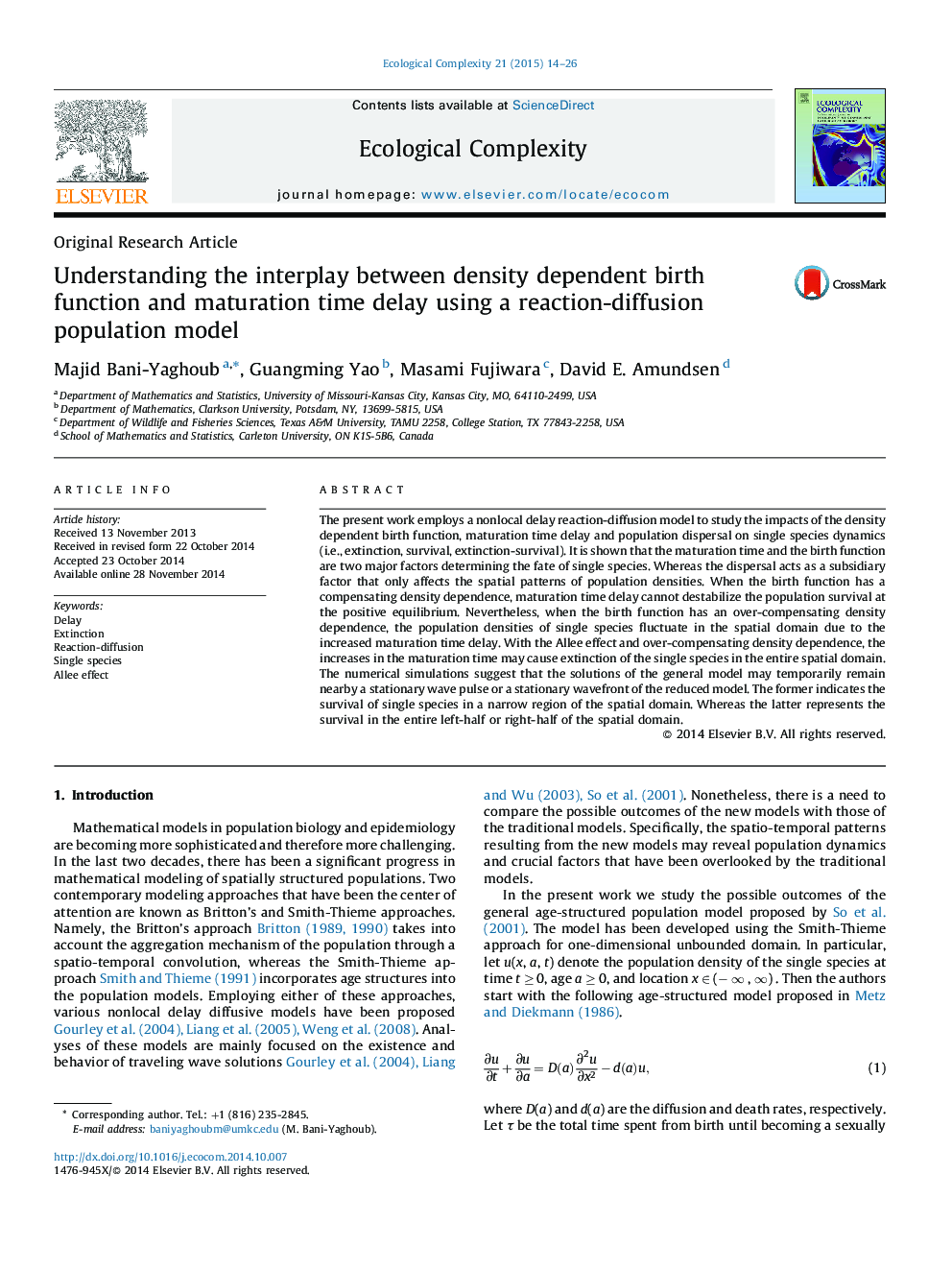| کد مقاله | کد نشریه | سال انتشار | مقاله انگلیسی | نسخه تمام متن |
|---|---|---|---|---|
| 4372397 | 1617093 | 2015 | 13 صفحه PDF | دانلود رایگان |
• We investigate the spatio-temporal patterns of a single species reaction-diffusion model with delay induced nonlocality.
• With a compensatory birth function, survival of the single species and the spatial patterns are delay independent.
• With an over-compensatory birth function, the spatial patterns become oscillatory and periodic when the delay is increased.
• If the over-compensatory birth function exhibits Allee effect, then the population may go extinct when the delay is increased.
• The stationary pulse solution represents the survival of single species only in a narrow region of the spatial domain.
The present work employs a nonlocal delay reaction-diffusion model to study the impacts of the density dependent birth function, maturation time delay and population dispersal on single species dynamics (i.e., extinction, survival, extinction-survival). It is shown that the maturation time and the birth function are two major factors determining the fate of single species. Whereas the dispersal acts as a subsidiary factor that only affects the spatial patterns of population densities. When the birth function has a compensating density dependence, maturation time delay cannot destabilize the population survival at the positive equilibrium. Nevertheless, when the birth function has an over-compensating density dependence, the population densities of single species fluctuate in the spatial domain due to the increased maturation time delay. With the Allee effect and over-compensating density dependence, the increases in the maturation time may cause extinction of the single species in the entire spatial domain. The numerical simulations suggest that the solutions of the general model may temporarily remain nearby a stationary wave pulse or a stationary wavefront of the reduced model. The former indicates the survival of single species in a narrow region of the spatial domain. Whereas the latter represents the survival in the entire left-half or right-half of the spatial domain.
Journal: Ecological Complexity - Volume 21, March 2015, Pages 14–26
